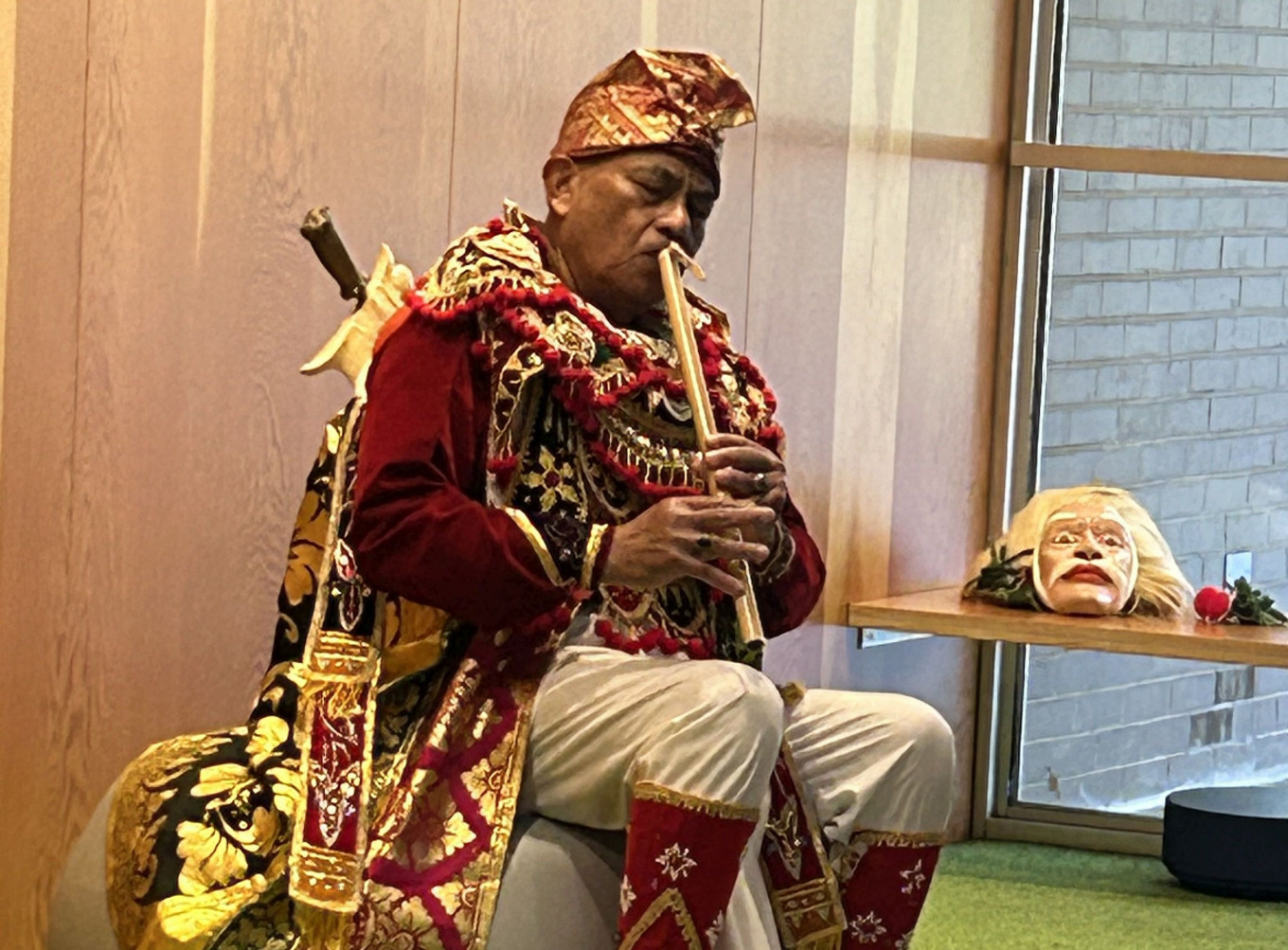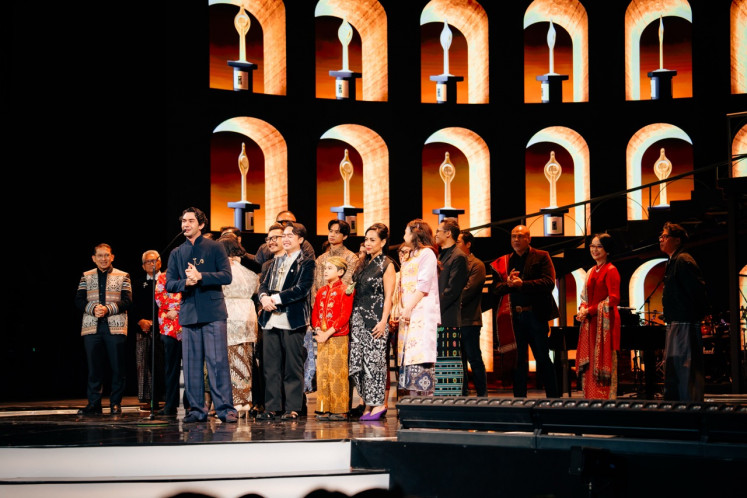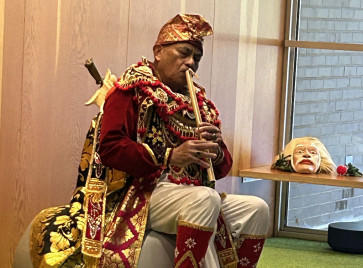Popular Reads
Top Results
Can't find what you're looking for?
View all search resultsPopular Reads
Top Results
Can't find what you're looking for?
View all search resultsPreserving tradition: The importance of Indonesian arts in a globalized world
Ngurah’s efforts to introduce Indonesian arts to US audiences have borne fruit, particularly in the Midwest. His work at institutions like Northern Illinois University (NIU) and the Indonesian Consulate in Chicago has sparked enthusiasm and curiosity among students.
Change text size
Gift Premium Articles
to Anyone
 Indonesian artist I Gusti Ngurah Kertayuda displays one of his talents in traditional art performances. Having lived in Chicago, the United States, since 1989, Ngurah has become a cultural ambassador, sharing the rich heritage of Indonesia with Americans of all ages. (Courtesy of I Gusti Ngurah Kertayuda/-)
Indonesian artist I Gusti Ngurah Kertayuda displays one of his talents in traditional art performances. Having lived in Chicago, the United States, since 1989, Ngurah has become a cultural ambassador, sharing the rich heritage of Indonesia with Americans of all ages. (Courtesy of I Gusti Ngurah Kertayuda/-)
A
s the sun sets over the bustling city of Chicago, in the United States, a unique cultural tapestry weaves its way through the urban landscape, emanating from a small studio where I Gusti Ngurah Kertayuda, an Indonesian artist, dedicates his life to teaching traditional Balinese dance and gamelan music.
Having lived in Chicago since 1989, Pak Ngurah, as he is affectionately known, has become a cultural ambassador, sharing the rich heritage of Indonesia with Americans of all ages. His journey underscores the significance of preserving and promoting traditional arts in an increasingly globalized world.
Ngurah’s story is one of passion and dedication. Born and raised in Indonesia, he began learning Balinese dance at the age of 10, eventually studying at SMKI, a school for the arts, from 1970 to 1973. His education extended beyond Bali to include traditional arts from Java and Sumatra, offering a comprehensive understanding of Indonesia’s diverse cultural landscape.
Today, he reflects on the unique beauty of these traditional forms, emphasizing their role in shaping refined personalities and fostering community among children. Through decades of teaching, both in Indonesia and the US, Ngurah has witnessed the transformative power of art.
In his view, art is not merely an aesthetic endeavor but a profound medium for developing responsibility, patience, and a sense of satisfaction. Introducing children to dance and gamelan in a positive and engaging manner can ignite a lifelong passion, fostering cultural appreciation and bridging divides between different communities.
In today’s digital age, traditional arts face significant challenges. The protective attitude of older generations toward gamelan instruments and dance forms has given way to a more open and accessible approach. However, the convenience of technology also brings the risk of cultural dilution. Platforms like YouTube make traditional arts more accessible, but they can also lead to oversimplification or loss of authenticity. Ngurah’s approach balances modern accessibility with a deep respect for tradition, ensuring that the essence of these ancient arts remains intact.
Ngurah’s efforts to introduce Indonesian arts to US audiences have borne fruit, particularly in the Midwest. His work at institutions like Northern Illinois University (NIU) and the Indonesian Consulate in Chicago has sparked enthusiasm and curiosity among students. From teaching Saman dance in elementary schools to conducting gamelan workshops at universities, he has created spaces where cultural exchange flourishes. These interactions not only help Americans appreciate Indonesian culture but also offer Indonesians a platform to learn about US traditions, fostering mutual understanding.


















